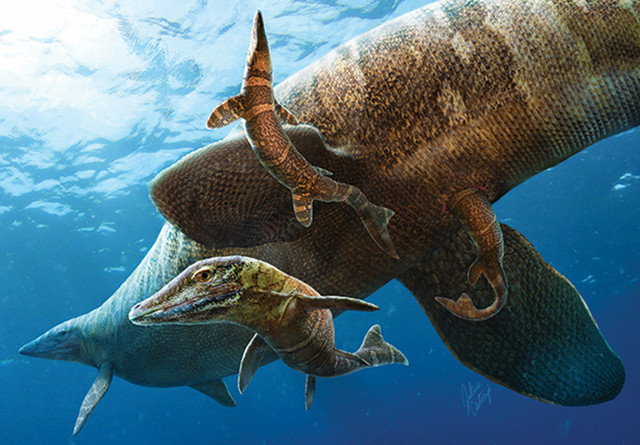
by Lucas Joel Friday, August 21, 2015

An artist's interpretation of an adult mosasaur giving birth to live young. Credit: Julius T. Csotonyi.
Mosasaurs, giant marine reptiles found in all the world’s oceans during the Late Cretaceous, may have reached up to 18 meters in length, and they were fearsome predators. Little is known, however, about newborn, or neonate, mosasaurs because very few have been found. Now, new research describing a rare fossil find from Kansas reveals that mosasaurs likely gave birth to live young that were born swimming and able to survive alongside the adults.
Because so few newborn mosasaur fossils have been discovered relative to adults, and because there is a known bias against preservation of newborn animals in Mesozoic terrestrial settings, it was previously thought that the animals might have climbed ashore and traveled inland to lay eggs, much like sea turtles do today. However, in the new study, published in the journal Palaeontology, Daniel Field, a doctoral student at Yale University, and his colleagues describe a neonate mosasaur fossil jawbone preserved in chalk originally deposited in a marine setting far from any landmass. This implies that adult mosasaurs likely gave birth to full-fledged swimmers in the open ocean, Field and his colleagues noted.
© 2008-2021. All rights reserved. Any copying, redistribution or retransmission of any of the contents of this service without the expressed written permission of the American Geosciences Institute is expressly prohibited. Click here for all copyright requests.